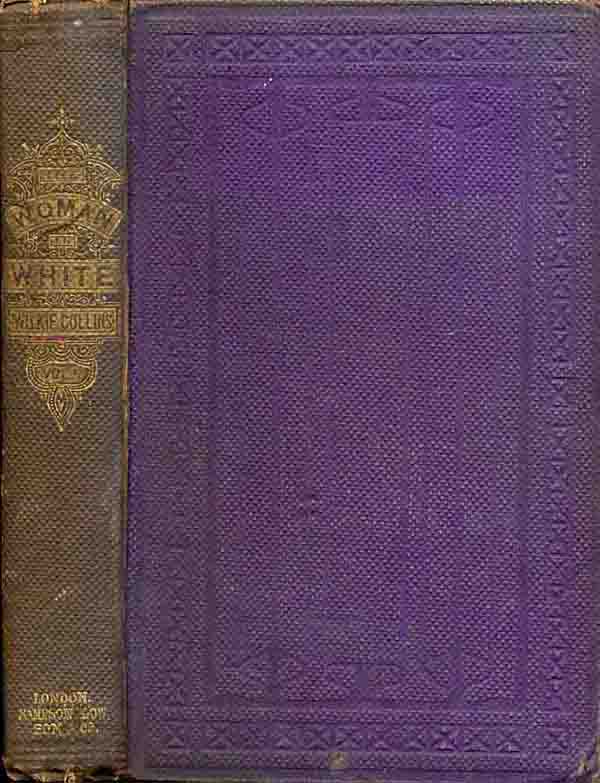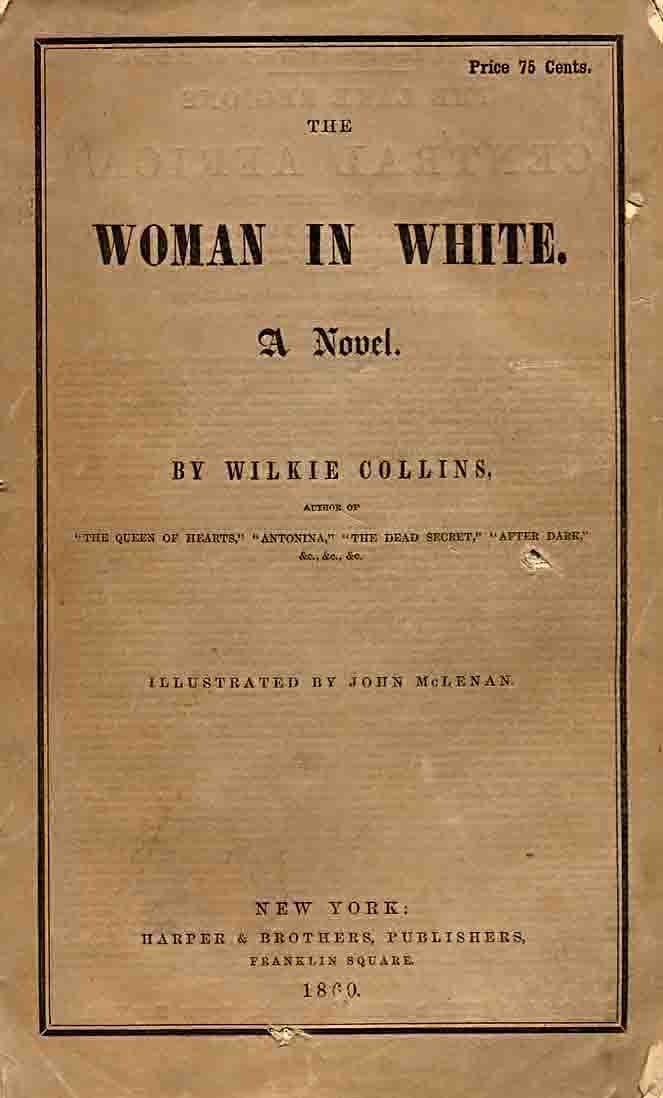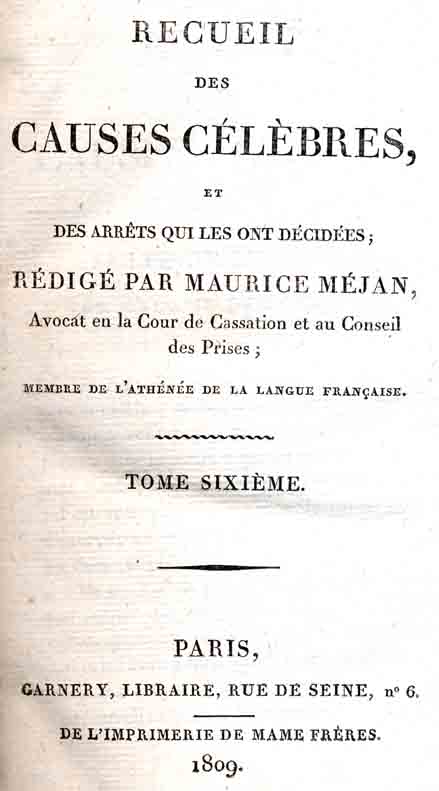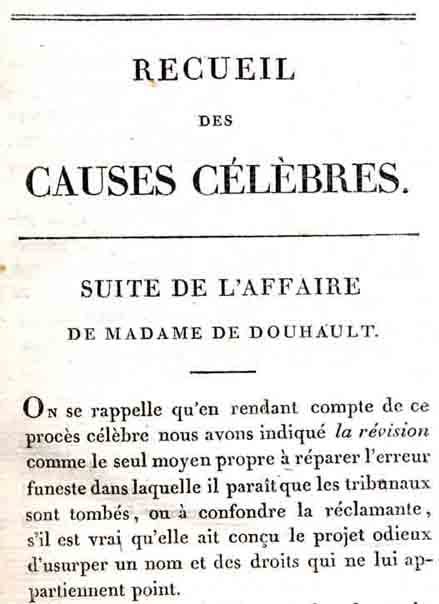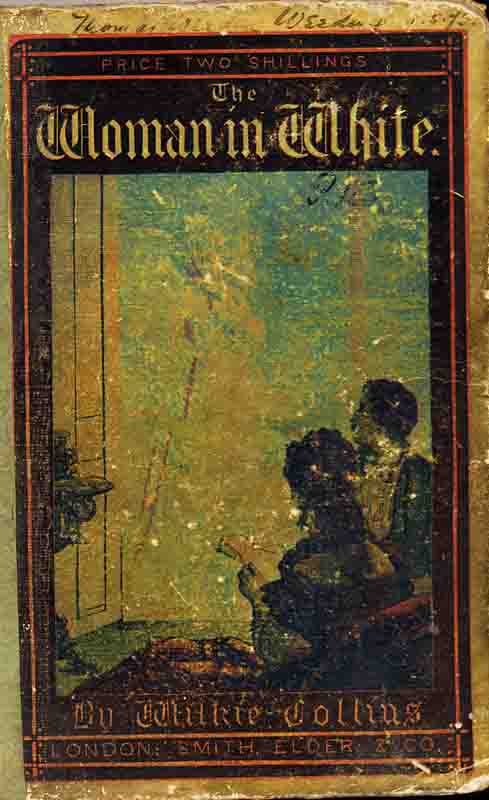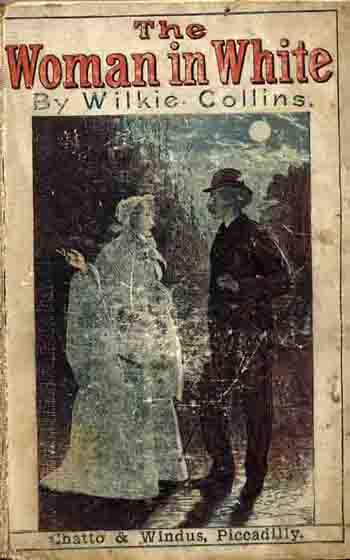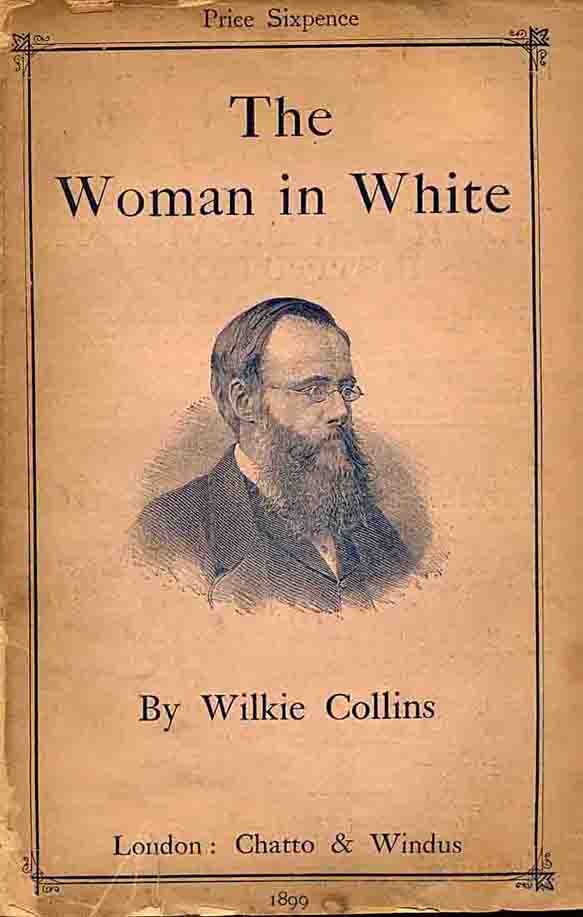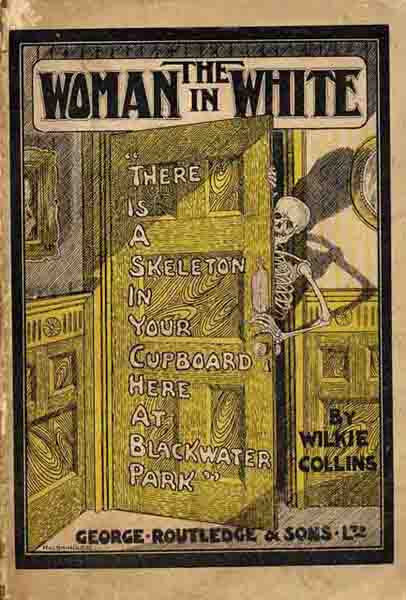'This is the story of what a Woman's patience can endure and what a Man's
resolution can achieve.'
[ Front Page ] [Dramatic Version ]
[ Full publishing chronology for The Woman in White ]
|
|
|
|
1st edition by Sampson Low in three volumes, August 1860 |
1st US edition by Harpers in paper wrappers, August 1860 |
Published in 1860, one of the two novels (with The
Moonstone) for
which Collins is most famous. It
firmly established his reputation with the reading public and helped raise the
circulation of All the Year Round.
As Smith, Elder found to their cost, 'everyone was raving about it.'
S. M. Ellis described how The Woman in White was so popular that
'every possible commodity was labelled "Woman in White".
There were "Woman in White" cloaks and bonnets, "Woman
in White" perfumes and all manner of toilet requisites, "Woman in
White" Waltzes and Quadrilles.' It
was parodied in Punch and even such a critical reviewer as Mrs Oliphant,
was unusually favourable. Edward
Fitzgerald read it several times and considered naming a sailing boat after
the determined Marian Halcombe. Prince
Albert read the book and approved. Thackeray
was engrossed from morning to sunset, and Gladstone found the story so
absorbing that he missed a visit to the theatre.
The Woman in White has never been out of print since its first
publication. In the twentieth
century there have been theatre, film, television and musical adaptations and
even a comic-strip version.
The Woman in White is generally regarded as the first Sensation Novel and inspired numerous imitations, most notably from Mary Braddon. The story is in part based on an eighteenth century case of abduction and wrongful imprisonment, taken from Mejan's Recueil des Causes Celebres. It uses the theme of substituted identity, a favourite with Collins, and also attacks the misuse of lunatic asylums.
|
|
|
The
story can be considered an early example of detective fiction with the hero,
Walter Hartright, employing many of the sleuthing techniques of later private
detectives. The use of multiple
narratives draws on Collins's legal training and as he points out in his
Preamble: 'the story here presented will be told by more than one pen, as the
story of an offence against the laws is told in Court by more than one
witness'. Collins described his
method of the writing The Woman in White in 'Mr Wilkie Collins in Gloucester Place', Number 81 in 'Celebrities at
Home', The World, 26 December 1877; and in 'How I Write my Books', The
Globe, 26 November 1887.
|
|
|
| 1872 Smith, Elder yellowback | 1889 Chatto & Windus yellowback |
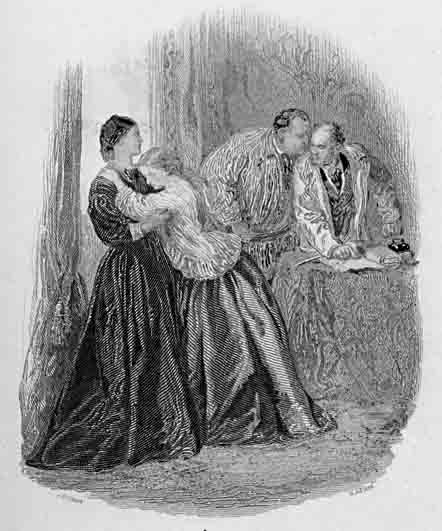
John Gilbert frontispiece to the 1861 one volume Sampson Low edition
Walter Hartright, a young drawing master, has secured a position in
Cumberland on the recommendation of his old friend Professor Pesca, a
political refugee from Italy. While
walking home from Hampstead on his last evening in London, Hartright meets a
mysterious woman dressed in white, apparently in deep distress.
He helps her on her way but later learns that she has escaped from an
asylum. The next day he travels
north to Limmeridge House. The
household comprises Mr Frederick Fairlie, a reclusive valetudinarian; Laura
Fairlie, his niece; and Marian Halcombe, her devoted half-sister.
Hartright finds that Laura bears an astonishing resemblance to the
woman in white, called Anne Catherick. The
simple-minded Anne had lived for a time in Cumberland as a child and was
devoted to Laura's mother, who first dressed her in white.
Hartright and Laura fall in love. Laura,
however, has promised her late father that she will marry Sir Percival Glyde,
and Marian advises Walter to leave Limmeridge.
Anne Catherick, after sending a letter to Laura warning her against
Glyde, meets Hartright who is convinced that Glyde was responsible for
shutting her in the asylum. Laura
and Glyde marry in December 1849 and travel to Italy.
Hartright also leaves England, joining an expedition to Honduras.
After their honeymoon, Sir Percival and Lady Glyde return the following June
to his family estate in Hampshire, Blackwater Park.
They are accompanied by Glyde's friend, Count Fosco, who married
Laura's aunt, Eleanor Fairlie. Marian
Halcombe is also living at Blackwater and learns that Glyde is in financial
difficulties. Sir Percival
unsuccessfully attempts to bully Laura into signing a document which would
allow him to use her marriage settlement of £20,000.
Marian now realises that Fosco is the true villain and is plotting
something more sinister, especially as Anne has reappeared, promising to
reveal to Laura a secret which will ruin Glyde.
Marian eavesdrops on Fosco and Glyde but is caught in the rain.
She collapses with a fever which turns to typhus.
While she is ill Laura is tricked into travelling to London. Her
identity and that of Anne Catherick are then switched.
Anne Catherick dies of a heart condition and is buried in Cumberland as
Laura, while Laura is drugged and placed in the asylum as Anne Catherick.
When Marian recovers and visits the asylum hoping to learn something
from Anne Catherick, she finds Laura, supposedly suffering from the delusion
that she is Lady Glyde.
Marian bribes the attendant and Laura escapes.
Hartright has safely returned and the three live together in obscure
poverty, determined to restore Laura's identity.
Exposing the conspiracy depends on proving that Laura's journey to
London took place after the date on the death certificate.
While looking for evidence, Hartright discovers Glyde's secret. Several
years earlier, Glyde had forged the marriage register at Old Welmingham Church
to conceal his illegitimacy. Glyde
attempts to destroy the register entry, but the church vestry catches fire and
he perishes in the flames. Hartright
then discovers that Anne was the illegitimate child of Laura's father, which
accounts for their resemblance.
Hartright hopes that Pesca can identify Fosco but to his surprise finds
that the Count is terrified when he recognises Pesca as a fellow member of a
secret society. Hartright now has
the power to force a written confession from Fosco and Laura's identity is
restored. Hartright and Laura have
married and, on the death of Frederick Fairlie, their son becomes the Heir of
Limmeridge.
A family tree for the main characters in The Woman in White can be found at the University of Iowa here.
|
|
|
| 1899 Chatto & Windus paperback | 1904 Routledge paperback |
Serialisation
All the Year Round, 26
November 1859--25 August 1860; and Harper's Weekly, 26 November 1859--4
August 1860.
Book Publication [ Full chronology for The Woman in White ]
First English edition
3 volumes, Sampson Low, London 1860.
Purple embossed cloth, covers blocked in blind, spines lettered in
purple on gilt, pale yellow end-papers. No
half-titles. Published 15-16
August 1860.
Vol I
viii + 316 pp
Vol II
(ii) + 360 pp
Vol III (ii)
+ 368 pp. 16pp publishers' catalogue dated1 August 1860 bound in at end.
NB Copies exist with
advertisements dated November 1860 and the 3 volume Second Edition has been
seen with the date as May 1860.
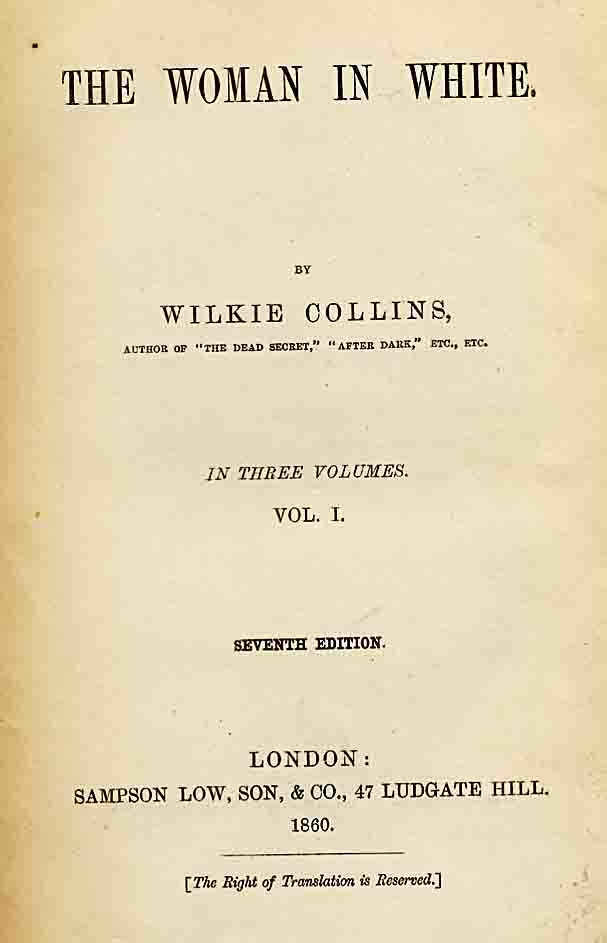
7th English edition in 3 volumes
Other 3 volume editions
Between August and November 1860 there were altogether eight three volume
editions. The 'second' to
'seventh' were designated as such on the title-page, followed by a 'new
edition' on 1 November. These
editions might more correctly be referred to as impressions but analysis of
the text and errata shows that small differences exist between the various
issues.
The complex story revolves around certain key dates and in the interests
of accuracy Collins was obliged to make progressive alterations to the
chronology of the plot. A review
in The Times of 30 October 1860 by E. S. Dallas proved that the date of
Laura's journey to London was impossible.
Collins wrote to Edward Marston of Sampson Low on 31 October '...If any
fresh impression of 'The Woman in White' is likely to be wanted, stop the
press till I come back. The critic
in The 'Times' is (between ourselves) right about the mistake in time.
Shakespeare has made worse mistakes - that is one comfort, and readers
are not critics who test an emotional book by the base rules of arithmetic,
which is a second consolation. Nevertheless
we will set it right the first opportunity...'
The mistake, however, was not rectified until the first one volume
edition in 1861.
1 volume editions
Sampson Low 1861-1863, with a new preface and illustrated title by J.
Gilbert; Smith, Elder 1865-1872; Chatto & Windus 1875-1932 (with 8
illustrations by F. A. Fraser); Routledge 1904.
First US edition
1 volume, Harpers, New York, 30 August 1860.
Issued in paper wrappers and various coloured cloths (commonly black or
brown), covers blocked in blind, spine lettered in gilt and illustrated with
the silver figure of a woman. The
advertisements form part of the collation and there are three states:
1. p (261) has 'Muloch'
for 'Mulock' and lists nine titles; p
(262) advertises The Mill on the Floss.
2. 'Mulock' is
correctly spelled on p (261), eleven titles are
listed and p (262) advertises The Mill on the Floss.
3. 'Mulock' is
correctly spelled with eleven titles listed, but
p (262) advertises nine titles by Thackeray.
Further Harper's editions 1861-1902.
Translations
Russian, St Petersburg 1860; French, (in Le Temps) Paris 1861, 2
vols, Paris 1862; Dutch, Amsterdam 1861, 1866; German, Stuttgart 1862, Vienna
1902.
Critical editions
Riverside, Boston 1969 (edited by A. Trodd and introduced by K. Tillotson); World's Classics 1980 (edited by H. P. Sucksmith); 1996 (edited by J. Sutherland); Penguin 1974 (edited by J. Symons); Everyman Library 1991 (introduced by N. Rance); Broadview Press 2006 (edited by Maria K. Bachman and Don Richard Cox).
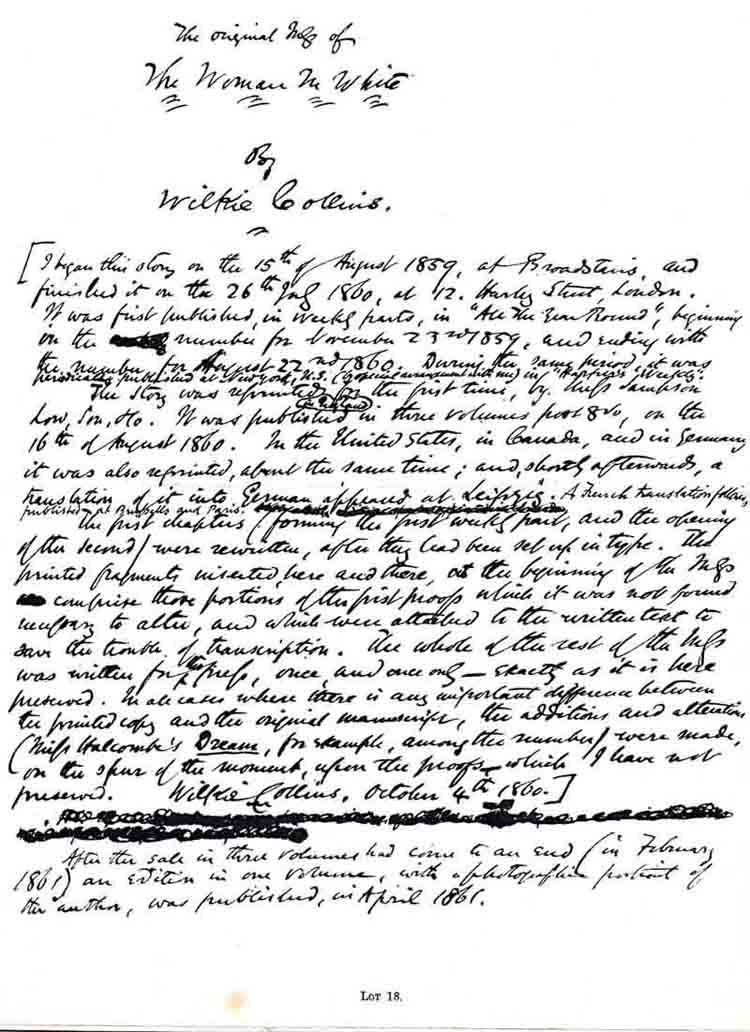 |
The original Mss of The Woman in White By Wilkie Collins 'I began this story on 15 August 1859, at Broadstairs, and finished it on the 26th July 1860 at 12 Harley Street, London. It was first published, in weekly parts, in "All the Year Round", beginning in the number for November 23rd 1859, and ending with the number for August 22nd 1860. During the same period, it was periodically published at New York, US (by special arrangement with me) in "Harper's Weekly." The story was reprinted for the first time, by Mess Sampson Low, Son, & Co. It was published in three volumes post 8vo, on the 16th of August 1860. In the United States, in Canada, and in Germany it was also reprinted, about the same time; and, shortly afterwards, a translation of it into German appeared at Leipzig. A French translation followed, published at Brussells (sic) and Paris. The first chapters (forming the first weekly part, and the opening of the second) were rewritten, after they had been set up in type. The printed fragments inserted, here and there, at the beginning of the Mss comprise those portions of the first proofs which it was not found necessary to alter, and which were attached to the written text to save the trouble of transcription. The whole of the rest of the Mss was written for the press, once, and once only - exactly as it is here preserved. In all cases, where there is any important difference between the printed copy and the original manuscript, the additions and alterations (Miss Halcombe's Dream, for example, among the number) were made, on the spur of the moment, upon the proofs - which I have not preserved. Wilkie Collins, October 4th, 1860.] After the sale in three volumes had come to an end (in February 1861) an edition in one volume, with a photographic portrait of the author, was published in April 1861. |
|
From Catalogue of Original Manuscripts by Charles Dickens and Wilkie Collins, Sotheby, Wilkinson & Hodge, 18 June 1890 |
|
Collins's own dates for All the Year Round are incorrect, so there may be some doubt about 16 August. It is generally accepted that in the US The Woman in White was also published during August and the date is often given as the 15th (Parrish does not suggest a date for the US edition and Brussel merely states 'during August 1860'). Collins was punctilious in his dealings with publishers. The likeliest conclusion is that he intended simultaneous English and US publication and the true dates probably do not differ by more than a day or so.
Marston, E., After Work, London 1904
Mott, H., 'Wilkie Collins (1824-1889). The Woman in White.
New York, 1860.' in Bibliographical Society of America, 26 (3rd
quarter 1942) p 232
Sotheby, Wilkinson & Hodge, Catalogue of the Original Manuscripts, by Charles Dickens and Wilkie Collins, 18 June 1890
[
Top
of Page ] [ Back
to Main Works ] [ Back
to Front Page
